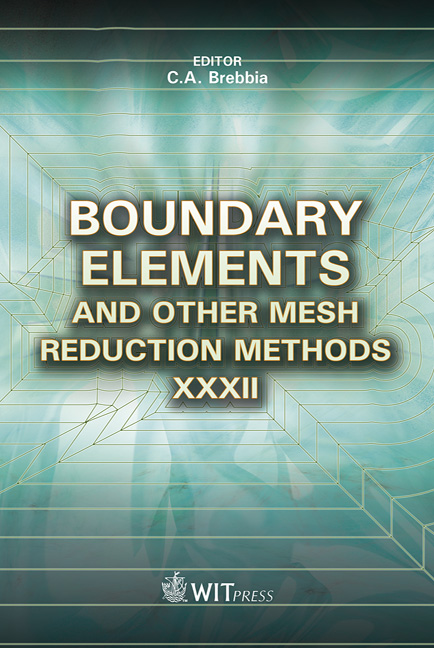Solution Of Velocity-vorticity URANS By BEM
Price
Free (open access)
Transaction
Volume
50
Pages
12
Page Range
29 - 40
Published
2010
Size
237 kb
Paper DOI
10.2495/BE100031
Copyright
WIT Press
Author(s)
L. Škerget & J. Ravnik
Abstract
This paper describes the fundamental aspects of turbulence modelling for incompressible fluid flow and corresponding numerical models based on the boundarydomain integral equations. The velocity-vorticity formulation of the Reynolds averaged Navier-Stokes (RANS) equations is used, while the averaged pressure field is determined by solving the Poisson velocity equation. Several low- Reynolds-number turbulent models, e.g. Launder-Sharma, are applied. 1 Introduction The set of partial differential equations governing the motion of viscous fluid is known as nonlinear Navier-Stokes equations. This equation system is generally considered to be the fundamental description for all laminar as well as turbulent flows, although some statistical averaging procedure is required in practice to predict the turbulence and simulate numerically the flow at higher Reynolds number values due to the enormous computational effort needed. Turbulence is a highly complex transport phenomenon. A number of well established characteristics of a turbulent motion can be summarized as: highly nonlinear transport process, highly diffusive flow, three-dimensional flow, flow with multiple length and time scales, and time dependent (stochastic) transport phenomenon with identifiable statistical flow properties. In most cases of modelling and simulation of real engineering turbulent flows we are not interested in detailed resolution of all turbulent flow scales in favour of some type of averaged flow description. Therefore, turbulence effects enter the flow description via a model that is typically based on a combination of theory and experiment. Various approaches exist for the turbulent flow prediction, i.e., full turbulence simulation, large eddy simulation, Reynolds averaged models, etc [1]. However, the extremely small time and length scales associated with turbulent fluid motion
Keywords





